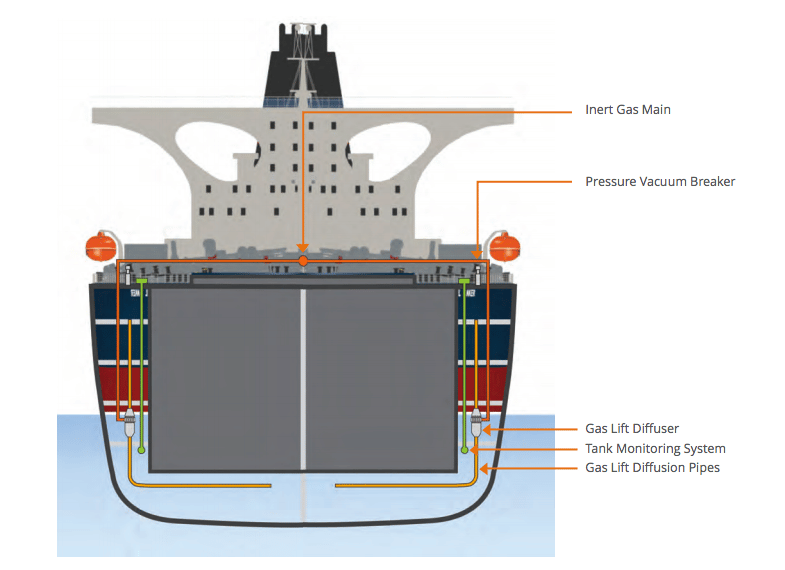UK-based Coldharbour Marine, a manufacturer of ballast water treatment systems based on unique inert gas technology, has reached an agreement with Greece’s TMS Tankers to retrofit its GLD™ BWT System. TMS Tankers is a member of the Athens based TMS Group operating currently 43 tankers.
The 2013-built 158,513DWT Suezmax tanker “BORDEIRA”, owned and operated by TMS Tankers, will be the first to be fitted with Coldharbour’s BWT System in early 2018 and will be used to carry out US Coast Guard (USCG) type approval tests for Coldharbour, supervised by Lloyd’s Register. LR has Independent Laboratory Approval status with the USCG. The classification society has already overseen IMO type approval for the Coldharbour system, validated by the UK’s Maritime and Coastguard Agency. The “Revised G8” certification tests agreed by the IMO’s Marine Environment Protection Committee last year will be undertaken simultaneously.
“We are delighted to be working with TMS,” said Andrew Marshall, CEO of Coldharbour Marine. “Our system was designed from the outset for large tankers and similar vessels – it is our primary target market. We understand from our customers that there is still much confusion regarding ballast water compliance timetables and how the practicalities of implementation will happen. Our ethos is to help our customers make the best decisions at the right time. Our mission is to safeguard the interests of ship-owners in our market segment and to protect their profits from the costs associated with the delays and the unavoidable regrowth dangers that will lead to PSC fines and C/P disputes. Unlike some vendors, we are not in a rush.”
Evangelos Sfakiotakis, TMS Tankers Technical Manager, commented: “We have carried out a careful assessment of the available technologies for our large tankers and have satisfied ourselves with Coldharbour’s inert gas-based system. There are several reasons for this, but the two main ones are; firstly, that the Coldharbour technology featuring the combination of no filters plus in-voyage treatment process guarantees that our ballasting operations will never be disrupted, and secondly, that the treatment during voyage avoids the potential risk of regrowth during a long ballast voyage. This ensures that not only will our tankers be able to meet required discharge standards at all times, but also that we can be absolutely certain that the commercial availability of the vessel will never be adversely affected by BWTS issues.”
Mr Marshall said that TMS Tankers had been clear that the technology it selected would need to be a long-term solution for existing ships that could serve without any risk or compromise to the way that its vessels are operated. “When we were developing our BWTS we prepared life-long ship financial timeline scenarios to understand how we could protect ship-owners’ interests and how selection of a not-fit-for-purpose BWTS could negatively affect a ship’s profitability. Selection of the GLD™ BWT System by a company with TMS Tankers’ reputation for technical expertise vindicates our approach.”
There is still much “discovery” to be made by ship owners as they start to come to grips with the realities of day to day BWTS operation, Mr Marshall added. Delays, breakdowns, crew training and the repercussions of Port State Control sampling protocols are just some of the hidden costs that are set to bite.
“The consequences, both financial and reputational for ship owners of making an incorrect decision on treatment technology will haunt the industry for years to come. Owners must ensure that the systems they install are fit-for-purpose – and that does not simply mean having a Type Approval certificate, be that from IMO or the USCG.”

